These SoCal Community Gardens Offer Radical Visions of Food Systems and Care

Community gardens throughout Southern California are refuges for healing, passing on cultural heritage, advocating health and environmental justice and creating food equity. Peek into the lush oases community gardens create for the community and greater environment. And learn about how each one is creating self-sustaining foodways supported by and for the communities they serve.
The MAYE Center

The sun is high in a nearly clear blue sky when the oums arrive in pairs, faces shaded with wide-brimmed sun hats and hands clutching bundles of reusable and plastic bags. They flock towards a house painted a bright teal color, the kind of color people would spend hours on the Internet debating its greenness or blueness. The house stands out on Anaheim Street in Long Beach, California like a paint splatter against the assortment of beiges and grays that define the surrounding buildings and sidewalks.
A lush ecosystem of greenery from tall fruit trees to dark green radish leaves shroud the house and are barely contained by a white wrought iron fence that lines the perimeter of the property.
The oums — a Khmer word used for addressing elders as a sign of respect — enter through the back gate and are greeted by Laura Som, a woman with long black hair that flows underneath a floppy, woven sun hat. They greet each other, in Khmer, with a level of familiarity, the way you would greet a family member at a holiday party.

Som is the founder and executive director of theMAYE Center, a community center and garden focused on trauma healing through four main elements: meditation, agriculture, yoga and education, each one working in synergy with the other to develop self-awareness and healing.
The space was founded eight years ago to address a problem Som recognized — the gap in resources for Long Beach's large population of Cambodian refugees.
Since the fall of the Khmer Rouge regime in 1979,more than 140,000 Cambodians immigrated to the United States as refugees. In the wake of homeland devastation by both Pol Pot's regime and U.S. bombings in the country, Cambodians entered the U.S., many through Long Beach due to the city's existing Cambodian population at the time.
"I experienced the worst violence in the refugee camp and all my memories were wiped for the first 10 years of my life," said Som, a Cambodian refugee herself, who immigrated to Long Beach in 1992 when she was 10 years old. "I didn't recognize my name, didn't remember I had a sister, didn't remember my father's name. None of that. And slowly it started coming back in high school. And then I have to learn about trauma on my own."
"I've looked at my own culture and kind of studied the patterns. And I realized what my elders have taught me in Cambodia, which was being in the land, gardening, agriculture, yoga in our daily lives, meditation and the aspect of valuing education and constantly learning new things," she added. "I really wanted to understand self-healing, and through all these suffering, multi-issues, what can I do for the community?"





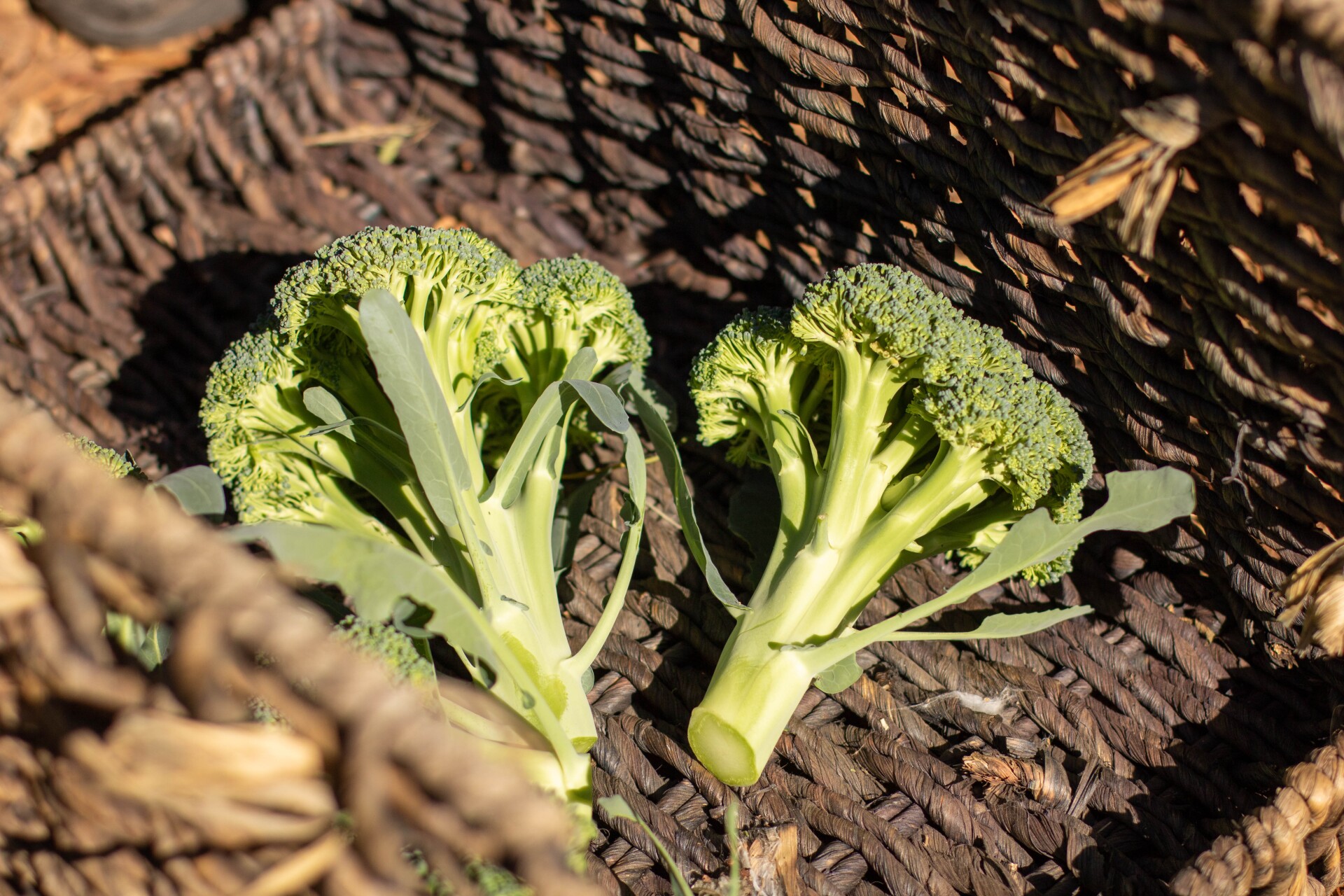


The oums get to work in the garden, harvesting the few produce that are ready for picking. Today, it's broccoli and radish. Everyone works together with ease, relying on little verbal communication to get the morning's work done. Kimsreng Ung, 75, takes on the row of broccoli, using a small knife to harvest the vegetable. She saves the broccoli leaves for the chickens at the back of the MAYE Center.
The garden grows a variety of produce typical to many community gardens like lettuce, mustard greens, radish and broccoli as well as more culturally relevant produce like lemongrass, bok choy, galangal roots, sugar cane and papaya.

When it comes to deciding what's grown at the community garden, "it's very based upon what the community is asking for," said David Hedden, director of agriculture at the MAYE Center. "A lot of it is us trying to cater to [the elder's] tastes, as well as seasonal of course, but just the familiarity of some of these crops."
It doesn't take long for the oums to get through the broccoli and radish. They transition to preparing sugar cane juice, employing Hedden's help in cutting down the tall and sturdy stalk. From there, it's just a matter of washing, slicing and pressing the sugar cane. All the oums in the garden have been at the center for eight years and have trained as community activists in the MAYE Center's "Transforming Trauma into Activism" program, even bringing their children and grandchildren to the center for intergenerational healing.

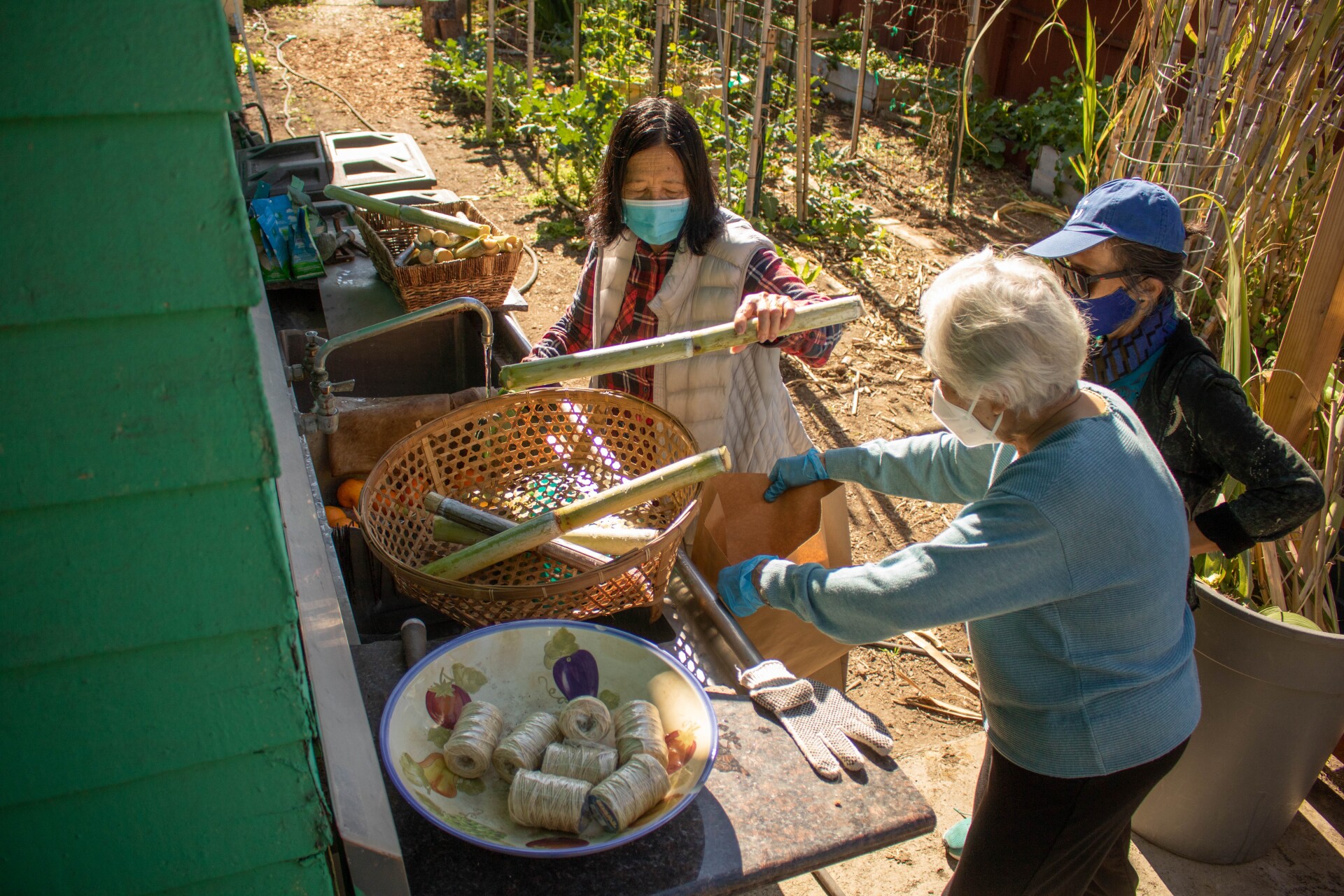


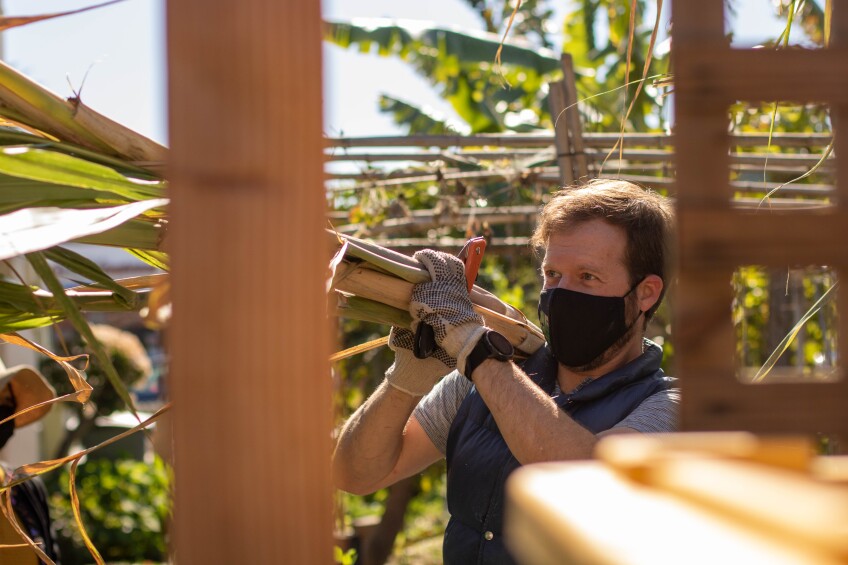



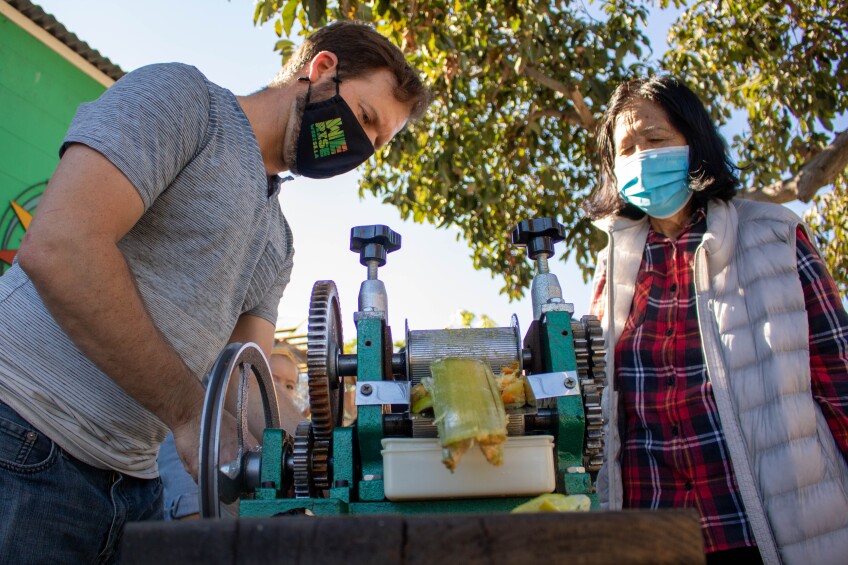



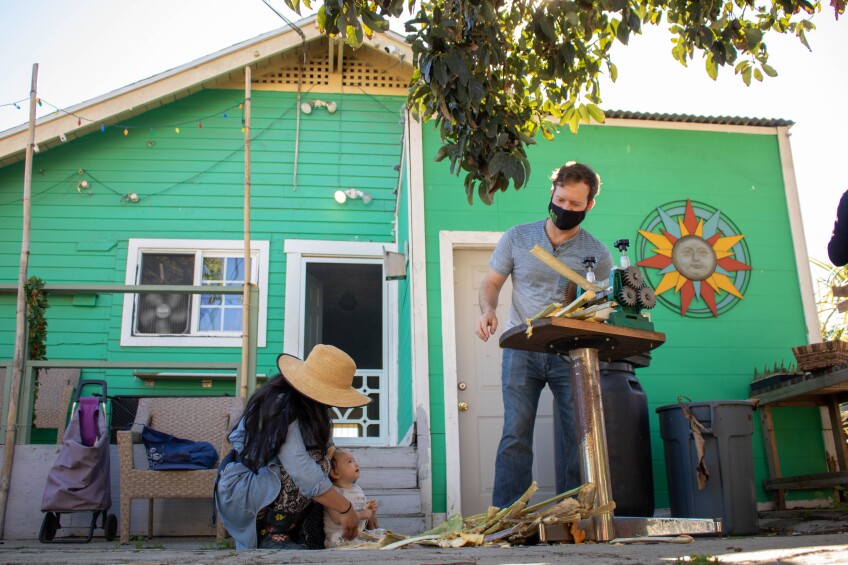





"When you're immigrating to a new country, the first thing you experience is just isolation where people don't value your culture, and you're thinking, 'Oh, my gosh, I'm isolated and all by myself,'" Som said. "The MAYE Center is here to provide the validation of our culture... to provide the elements of healing from our cultures, not only to the Cambodian community, but to the larger community."
During the pandemic, the MAYE Center added more programs to address the greater community's shifting needs. Virtual gardening education programs were especially popular at the beginning as several members gained interest in growing their own home gardens. One of the MAYE Center’s more recent programs is the Night 'Marklet', a micro night market squeezed in the street parking between the MAYE Center and the adjacent United Cambodian Community where attendees can support small Cambodian businesses and eat food and produce provided by the MAYE Center.
Huerta del Valle

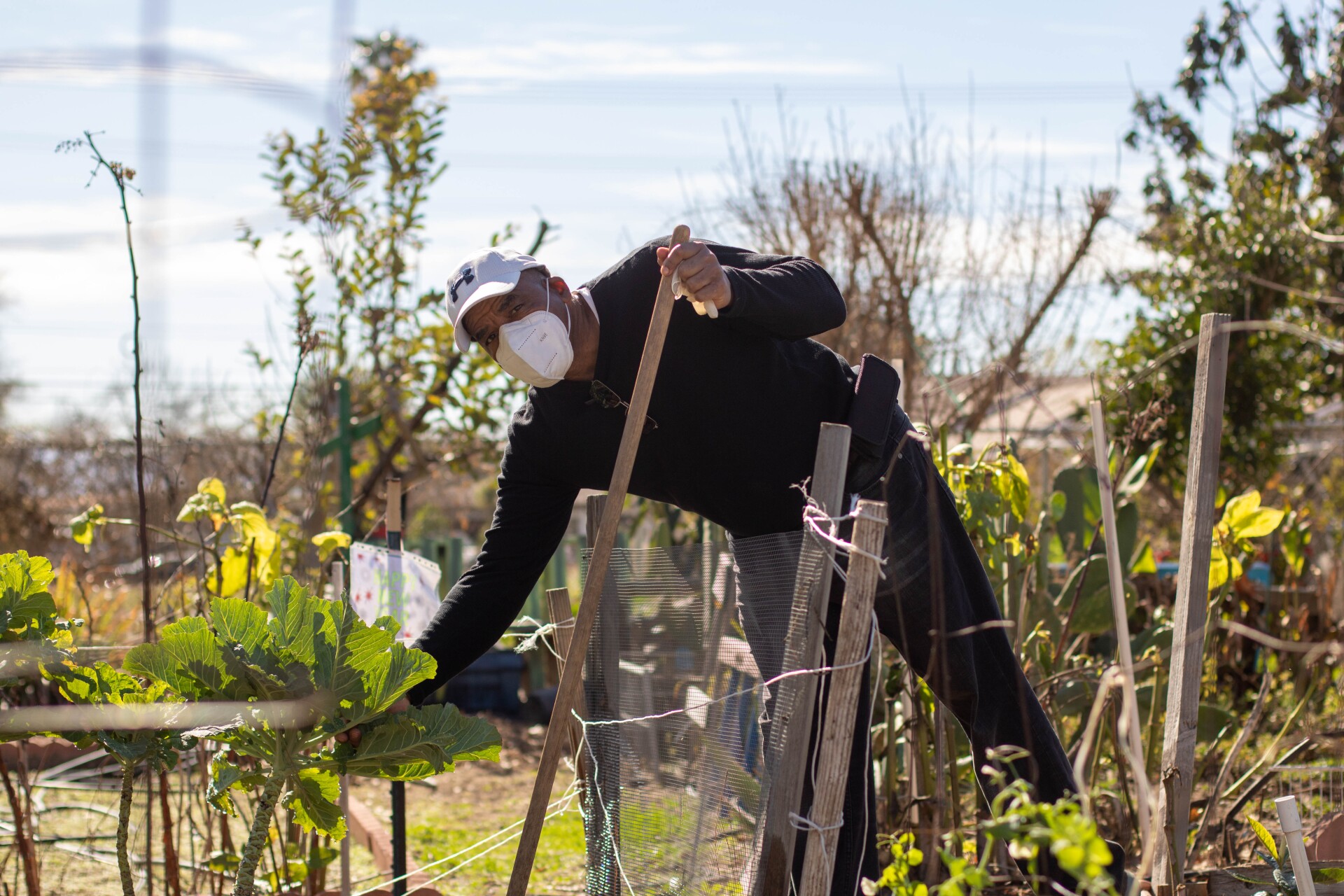



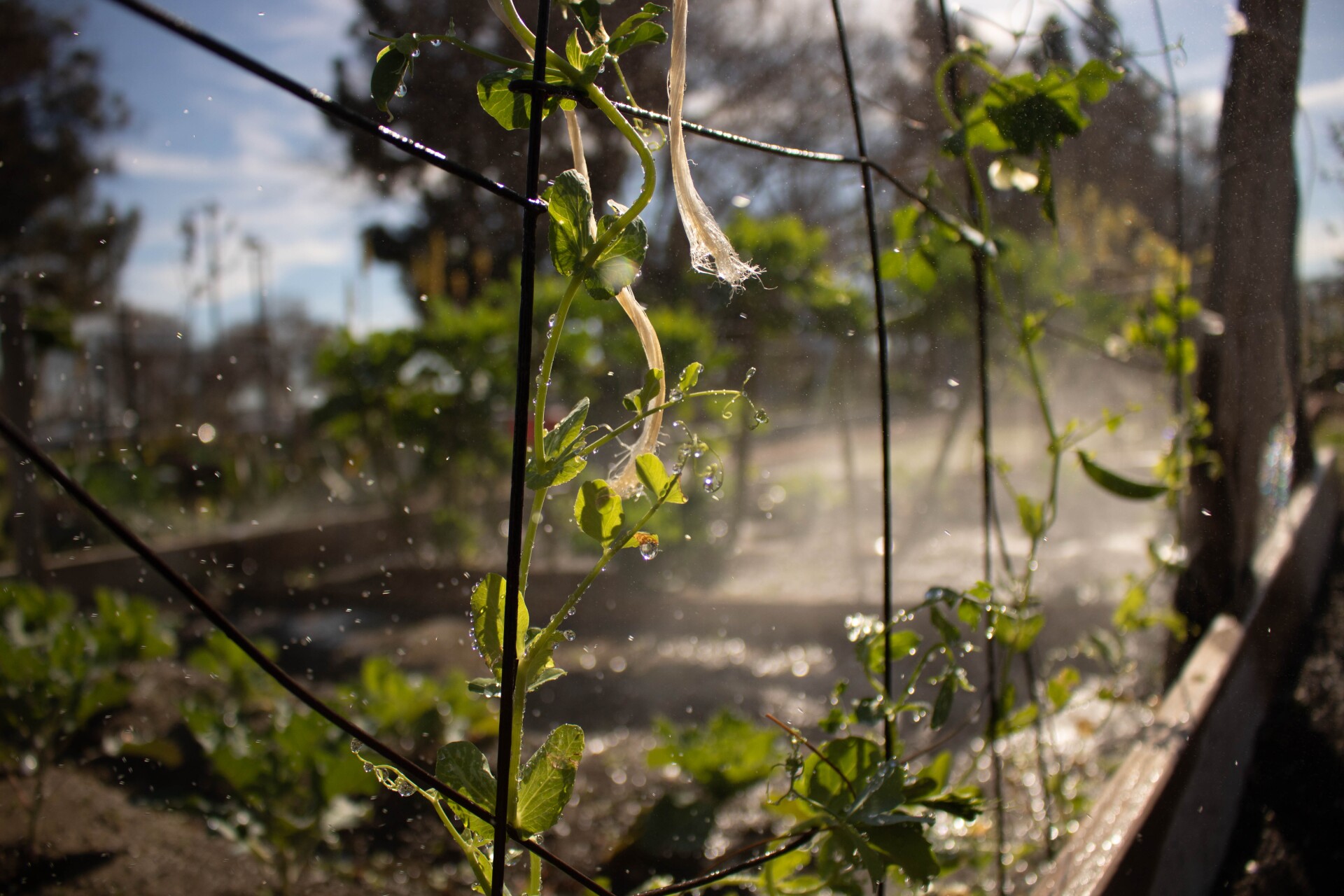


Meanwhile, 50 miles away in Ontario, California, Reginald McCall tends to a small 10-by-20 square-foot plot. With a roll of twine, he reinforces the plot's fencing to withstand the Santa Ana winds that batter the Inland Empire. For the past eight to ten years, McCall and his wife have maintained and grown produce at the plot, one of over 60 in theHuerta del Valle community garden. At the moment, their plot is growing carrots, broccoli and string beans trailing up a small wooden trellis.
Huerta del Valle's flagship location in Ontario is divided into two spaces. At the front is the community garden where members can rent a plot for $35 a year. At the back is a space dedicated to produce grown and maintained by Huerta del Valle's farmers. All produce harvested at Huerta del Valle is then sold in affordable community-supported agriculture (CSA) boxes or individually at Huerta del Valle's three weekly farm markets.
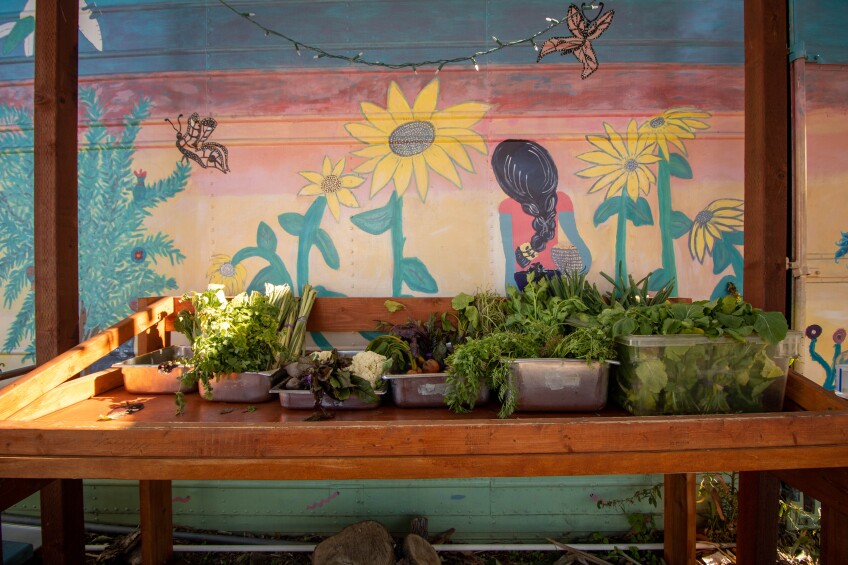
For McCall, gardening, a skill passed down to him from his parents, offers a healthier way of eating. "You know you're eating organic. You know what you put into it and what you didn't," McCall said as planes above fly in and out of the nearby Ontario Airport. "And you can share with others. Whatever you grow, you share with others so that they may enjoy the fruits of your labor too."
Giving the community access to healthy and fresh food to be shared is exactly why Huerta del Valle founder and director Maria Alonso started the community garden in 2011. The inspiration for the community garden arose from a need for Alonso's son. In 2010, Alonso's son was diagnosed with ADHD and his doctors offered the family two options: medication and a change in diet.


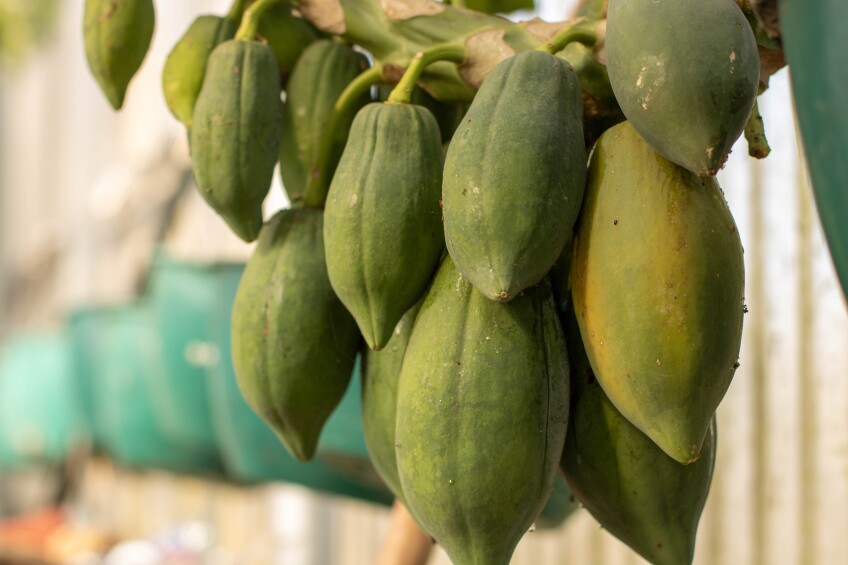



But when Alonso began the journey of seeking out fresh and organic produce for her son's new diet, she was swiftly met with barriers like high costs and long distances. Frustrated with her dwindling options, Alonso turned to community gardening, starting with only 15 plots for 15 families thanks to a partnership with Claremont College where Alonso worked as a promotora, or a community health worker serving Spanish-speaking communities.
Most of Alonso's knowledge in gardening comes from traditions and tips passed down from her parents. But a lot of it also comes from learning as she goes.
"I learn a lot when manos ala obra, when I put my hands in the soil," Alonso said.

Since the garden's founding in 2011, Huerta del Valle's humble 15 plots grew to over 60. They've also expanded to a second community garden in Jurupa Valley; a composting facility in Ontario; and a nature center in Riverside to be used for row-cropping, grazing animals, demonstrations and tours. Furthermore, plans for two ranches, one in Riverside and one in Crestmore, are in the works. Every addition to Huerta del Valle’s network is step towards their mission to create a system where local and sustainably produced food is available to everyone in the Inland Valley region from Temecula to Needles. Alonso envisions "one garden every mile," for the Inland Empire because, "food is medicine."


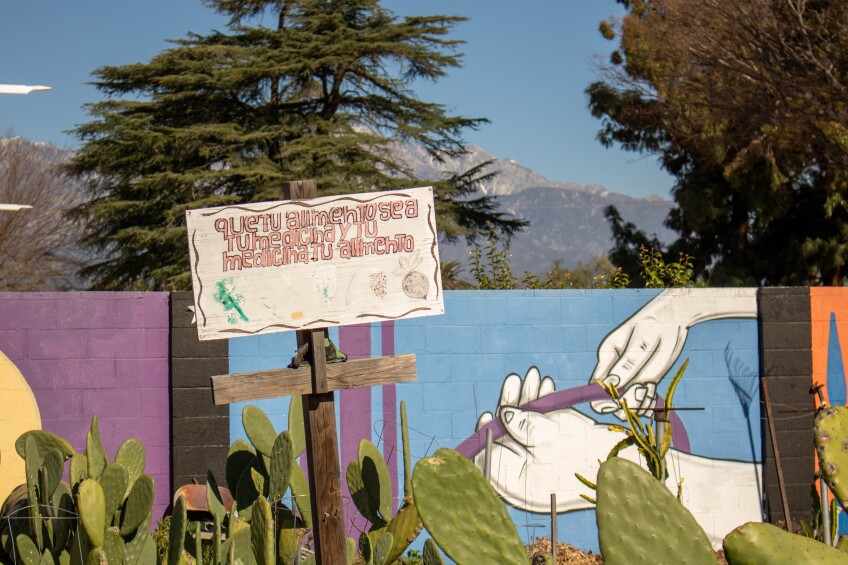

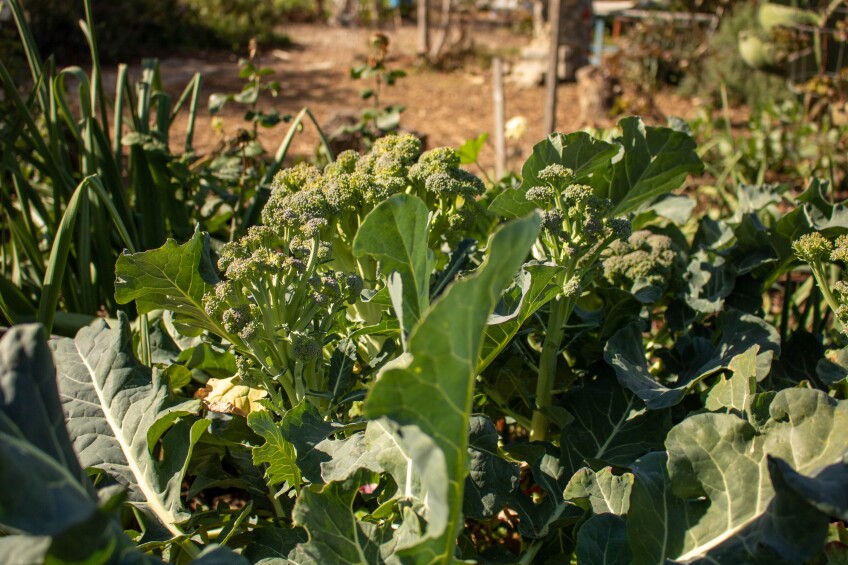

But until then, Alonso says she's swelled with joy when community members share testimonies of how the garden has benefited their health and rekindled connections to their ancestry.
"The community comes and says, 'Oh Maria, thank you. Because when I come to the garden, I don't drink that pill for depression anymore.' Or 'I feel connection with the soil and I remember my family in Mexico and it brings me the memories with my parents.' This is a very good satisfaction for myself."
La Cosecha Colectiva

ForLa Cosecha Colectiva, they have a different approach to achieving "one garden every mile." La Cosecha Colectiva is a decentralized community garden, with over 10 gardens spread across homes from West Long Beach to East L.A.
One of those homes belongs to La Cosecha Colectiva member Brenda Citlalicue Rivera of Lynwood, California. Her home, a pale orange one-story, occupies a corner lot that doubles as a bustling ecosystem full of aromatic and medicinal plants from white sage and lavender to an elderberry plant with leaves that smell like peanut butter.
La Cosecha Colectiva is one of the many arms out ofEast Yard Communities for Environmental Justice, a non-profit organization advocating for a safe and healthy environment for communities disproportionately suffering negative impacts of industrial pollution, largely serving communities that fall along the 710 corridor.
EYCEJ's decentralized community garden approach arose after recognizing how far many members have to travel for their grocery needs. So, the organization looked within their communities for a potential lot to transform into a community garden. Toxic soil and high costs for renting and maintaining a space made the search difficult. On top of that, a centralized community garden couldn't cater to members spread out across West Long Beach to East L.A.
"So we just looked at folks who are already doing the work culturally. All the 'hoods that East Yard is in are Black and Brown hoods. We come from a culture of knowing how to grow, whether that was work related, or just culturally related from our history," said Laura Cortez, community organizer and co-executive director of the Southeast L.A. region of EYCEJ. "We were just like, 'Well, a lot of folks already have plants. So why don't we just be more intentional about sharing those plants and teaching other folks to grow?'"
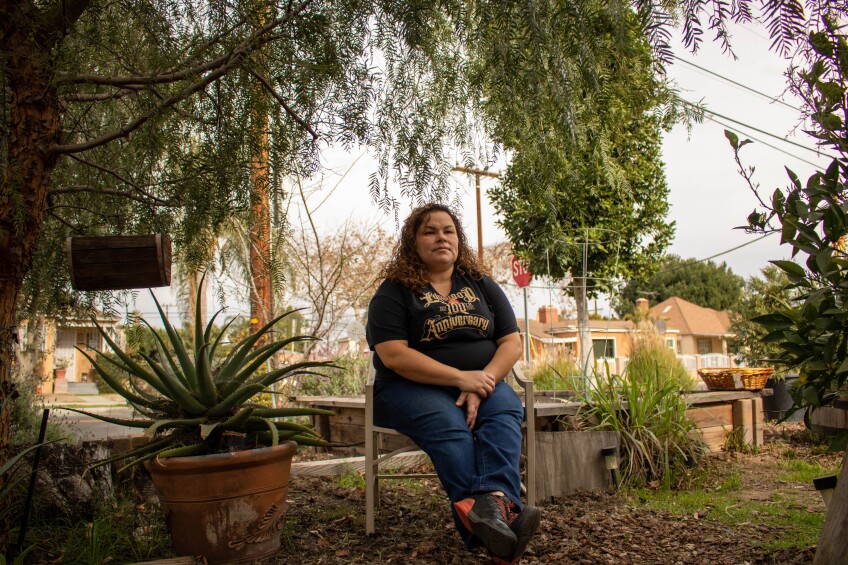



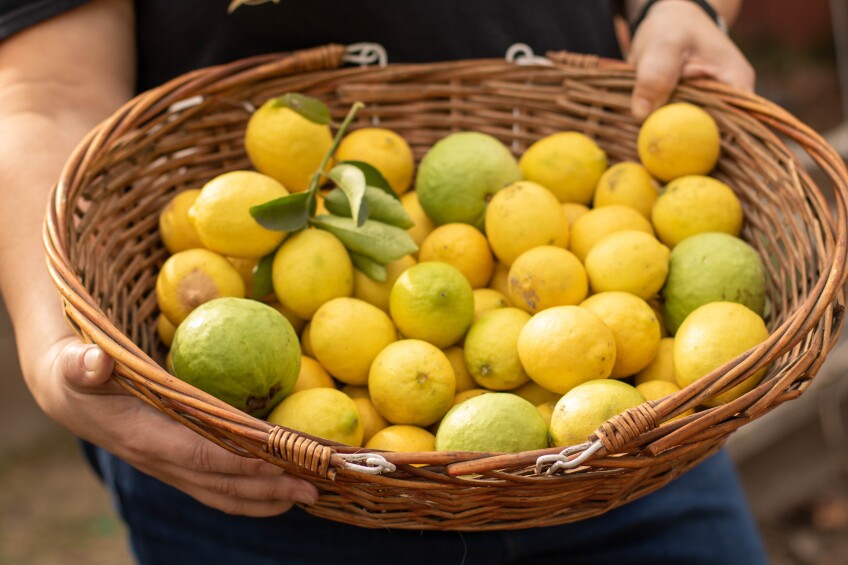

A decentralized community garden spread out across members throughout the region has allowed La Cosecha Colectiva to create a self-sustaining food network powered by community members. Self-sustenance proved to be especially important during the pandemic, when members of the Colectiva relied on one another for food.
"For me, joining La Cosecha was the idea of not having to rely on goods movement, not having to rely on capitalism," Cortez said. "The reality is that this system is a failure. And I know that's super critical and political, but this is a failing system… If the goods movement stops tomorrow, people are gonna be a*s out. And a lot of people are gonna struggle. I think, for me and my people, I want to make sure we're good."
Recently, EYCEJ and the Theodore Payne Foundation for Wildflowers and Native Plants, a nonprofit that works to inspire and educate Southern Californians on California native plants, have partnered together to introduce and install drought resistant, native gardens within La Cosecha Colectiva gardens.
"We need every single little yard to be a tiny ecosystem," said Brenda Kyle, community manager at the Theodore Payne Foundation. "And that's the goal. It's not just gardening for pleasure, it's gardening for the health — personal health and for the health of the environment."



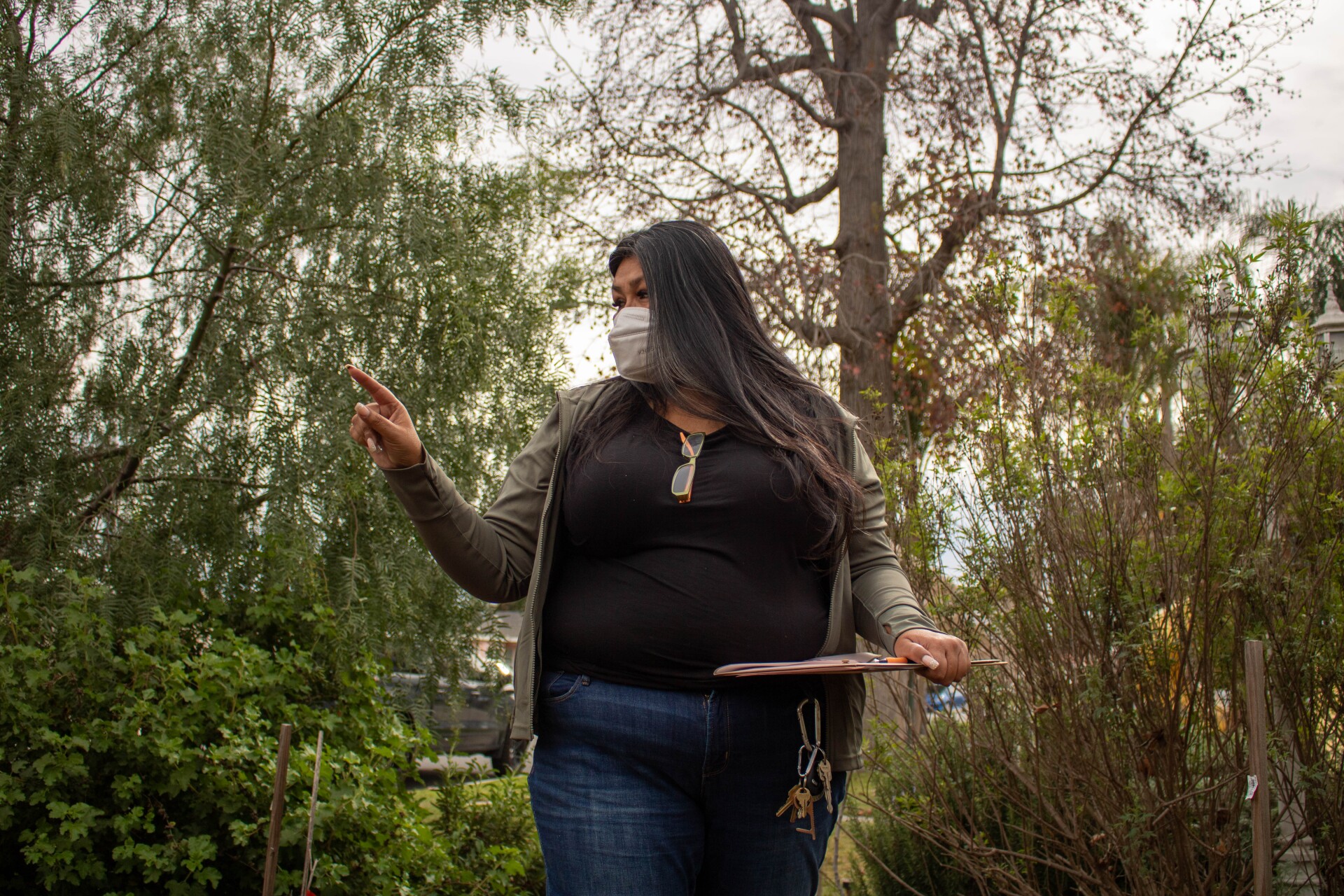




Cortez, Rivera and Kyle tour around Rivera's yard, imagining and envisioning opportunities for California native plants to grow. Some native plants already grow and thrive in Rivera's yard like the Baja nightshade and sage bush.
For Rivera, introducing more California native plants in her yard is all a part of acknowledging the land’s history. "I think it's important to pay homage, pay respect and to continue that relationship that the Tongva people had with these plants that naturally grew here, before it was bulldozed over and over so many times," Rivera said.








